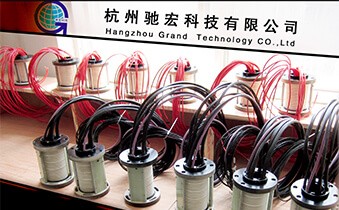In the realm of electrical engineering, slip rings play a vital role in ensuring the seamless transmission of power and signals between stationary and rotating parts of machinery. While slip rings often go unnoticed, their construction and materials are of utmost importance in ensuring reliable and efficient operation. Today, we delve into the world of slip rings, unveiling the diverse materials that serve as the building blocks of these unsung heroes. Join us as we explore the curious world of slip-ring materials and their impact on various industries.
- The Foundation: Understanding Slip Rings
- The Materials That Make It Happen
- The Impact on Various Industries
The Foundation: Understanding Slip Rings
Before delving into the materials, let’s first understand the fundamental purpose of slip rings. In essence, slip rings are electromechanical devices that enable the transmission of power, electrical signals, and data between stationary and rotating parts. They consist of two main components: a stationary part known as the stator and a rotating part called the rotor. The connection between the stator and rotor is facilitated through conductive materials, allowing for uninterrupted power and signal transfer.
The Materials That Make It Happen
Copper: Copper stands as one of the most prevalent and widely used materials in slip-ring construction. Renowned for its excellent electrical conductivity, copper ensures efficient power transmission and signal transfer. Its high thermal conductivity also allows for effective heat dissipation, making it ideal for slip rings that operate under demanding conditions. The use of copper in slip rings spans various industries, from robotics and automation to wind energy and aerospace.
Silver: Silver is another popular material utilized in slip rings, primarily due to its superior electrical conductivity. With even higher conductivity than copper, silver provides excellent signal transmission capabilities, making it ideal for applications where low resistance and high-quality signal integrity are crucial. Silver-plated slip rings find applications in fields such as aerospace, defense, medical equipment, and precision machinery.
Gold: Gold finds its place in slip-ring construction due to its exceptional resistance to corrosion and oxidation. While not as conductive as copper or silver, gold’s unique properties make it highly suitable for slip rings that require long-term reliability and exceptional contact quality. Gold-plated slip rings are commonly used in industries such as aerospace, defense, and high-end electronics.
Aluminum: Aluminum serves as a lightweight and cost-effective alternative in slip-ring manufacturing. While not as conductive as copper, silver, or gold, aluminum offers good electrical conductivity and thermal dissipation properties. Aluminum slip rings find applications in industries where weight reduction and cost efficiency are key considerations, such as automotive systems and light-duty machinery.

Carbon: Carbon is a versatile material used in certain types of slip rings, particularly those designed for high-speed applications. Carbon brushes, in combination with metal rings, create a sliding contact interface that allows for efficient power transmission. Carbon slip rings are known for their ability to handle high speeds, low electrical noise, and resistance to wear. They find applications in wind turbines, high-speed motors, and specialized industrial equipment.
The Impact on Various Industries
Need pricing information? Submit your inquiry here.
The choice of slip ring materials holds significant implications for different industries. Let’s explore the impact of these materials on some key sectors:
Robotics and Automation: In the realm of robotics and automation, slip rings with high-conductivity materials such as copper and silver ensure efficient power transmission and precise signal transfer. These materials enable seamless communication between robotic arms, sensors, and control systems, enhancing the overall performance and accuracy of robotic operations.
Wind Energy: Slip rings play a critical role in wind turbines, facilitating the transfer of power and data between the stationary base and rotating blades. Materials like copper, silver, and gold ensure reliable power transmission in wind turbine generators, contributing to efficient energy production and optimal performance.
Aerospace and Defense: Slip rings find extensive use in aerospace and defense applications, where reliability and durability are paramount. The choice of materials such as gold or silver ensures long-term performance in critical systems like radar installations, aerospace guidance systems, and communications equipment.
Medical Equipment: Slip rings with corrosion-resistant materials like gold find applications in medical equipment, where reliability and precise signal transmission are essential. These materials ensure uninterrupted power and data transfer in medical imaging equipment, surgical robots, and advanced diagnostic devices, contributing to improved patient care and accurate diagnoses.
Slip rings may be small components, but their impact on the performance and reliability of various systems cannot be overstated. The choice of materials, such as copper, silver, gold, aluminum, and carbon, determines the efficiency, conductivity, and durability of slip rings. These materials ensure seamless power transmission and signal transfer in industries ranging from robotics and wind energy to aerospace and medical equipment. As technology advances and industries evolve, slip-ring materials continue to play a crucial role in enabling the seamless connectivity that drives innovation and progress.
See What We Can Do

